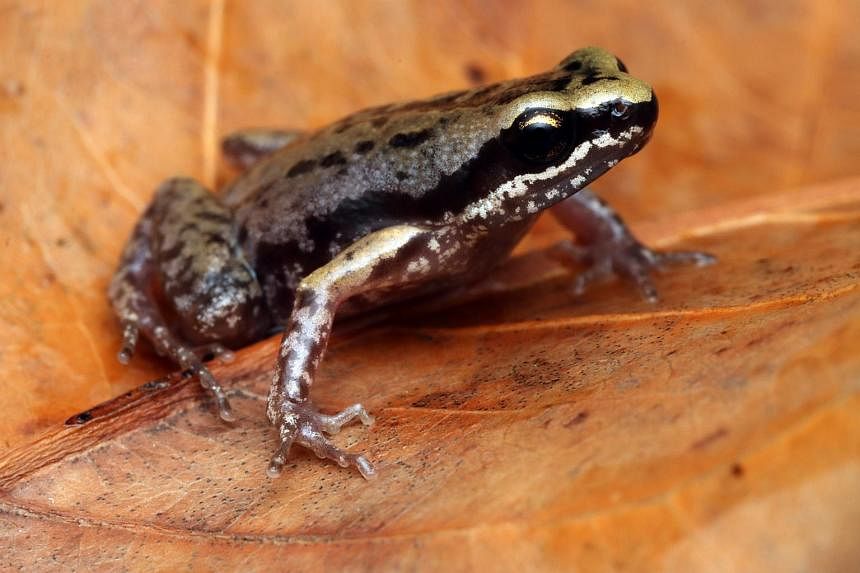SINGAPORE - The quest to identify a mysterious frog first recorded along Old Upper Thomson road three years ago has led to the discovery of a whole new frog species at a Kranji site littered with trash and construction rubble.
The last time a frog species was discovered here was nearly 40 years ago.
The greyish-brown frog, which is barely bigger than a marble, was named Subaraj's paddy frog (Micryletta subaraji) after the late conservationist Subaraj Rajathurai, Mr Sankar Ananthanarayanan, the president of the Herpetological Society of Singapore (HSS), told The Straits Times.
"Lots of places and wildlife in the region are named after colonial-era figures such as Stamford Raffles and Alfred Russel Wallace. It is only recently that regional scientists and amateur naturalists have become more prominent, so we wanted to name the frog after Subaraj, who was as much an inspiration to us as any of these other naturalists," added Mr Sankar, 27.
Along with his trademark bandana and Santa Claus-esque beard, Mr Subaraj is renowned for helping to save some of Singapore's beloved green spaces, including the Sungei Buloh Wetland Reserve, as well as fighting to protect the Republic's remaining habitats amid projects such as the Cross Island Line.
"Like Subaraj, the frog, which has so far been found only in Singapore, is priceless national and natural heritage that needs to be valued and appreciated by future generations," said Dr Chan Kin Onn, 38, curator of herpetology at the NUS Lee Kong Chian Natural History Museum.
Dr Chan was the primary investigator of the paper formalising the species' discovery.
Published in scientific journal Vertebrate Zoology on June 29, the paper marks the first major publication for four of its co-authors.
It is fitting to name the paddy frog after Mr Subaraj, who was very passionate about imparting his love of nature to the young people he served as mentor to during the founding of HSS, said the society's co-founder Law Ing Sind, 26.
HSS secretary Shivaram Rasu, 28, added: "We still remember every nature walk we've taken with him - he could remember and mimic the different bird calls in Singapore."
The authors' interest in identifying the diminutive amphibian dates back to 2019, when a single individual of its kind was sighted by some HSS members along Old Upper Thomson Road.
It was initially presumed to be another species from the same genus, Micryletta.
Investigation into the frog's true identity came a year later, when the four members of HSS embarked on a project with the Lee Kong Chian Natural History Museum to detect and build a tissue repository of non-native reptiles and amphibians.
"As we were unsure if the frog was native, we got permits to collect it from Kranji Marshes and sequenced its DNA," said HSS co-founder Law Ingg Thong, 24.
After taking detailed measurements and conducting genetic analyses, the group found that the DNA sequence and morphology of the frog was sufficiently different from other paddy frogs in the region, which qualified it to be classified as a novel species.
Given that Singapore has a very small land area and is quite urbanised, it is surprising that this new species has eluded detection for so long, said Mr Law Ingg Thong.
The last new frog species to be described in Singapore was the Malesian frog (Limnonectes malesianus), or Malaysian river frog, in 1984.
The nocturnal swamp-dwelling amphibian can also found in Malaysia, Thailand and Indonesia.
Said Mr Sankar: "This and recent taxon discoveries in Singapore demonstrate that the biodiversity of the highly urbanised island-state is still far from being fully realised and underscores the need for continued systematic collections, surveys and protection of remaining habitats."


